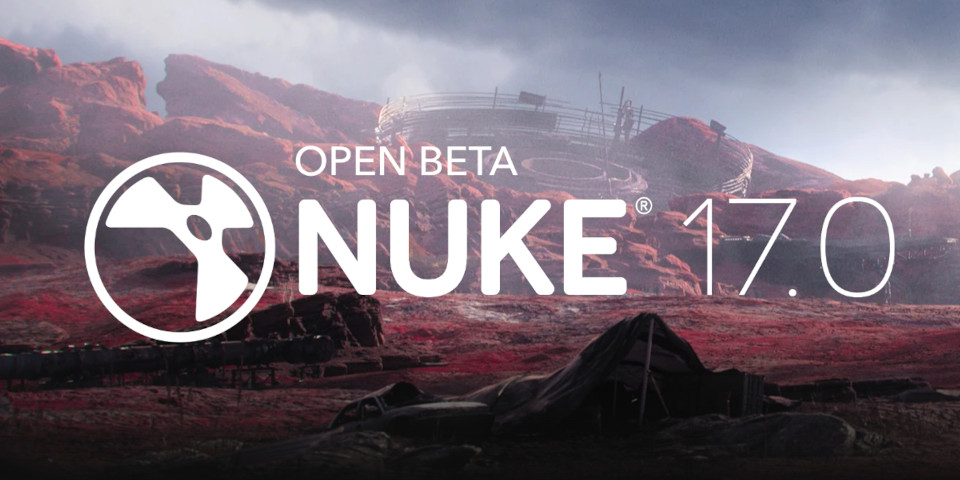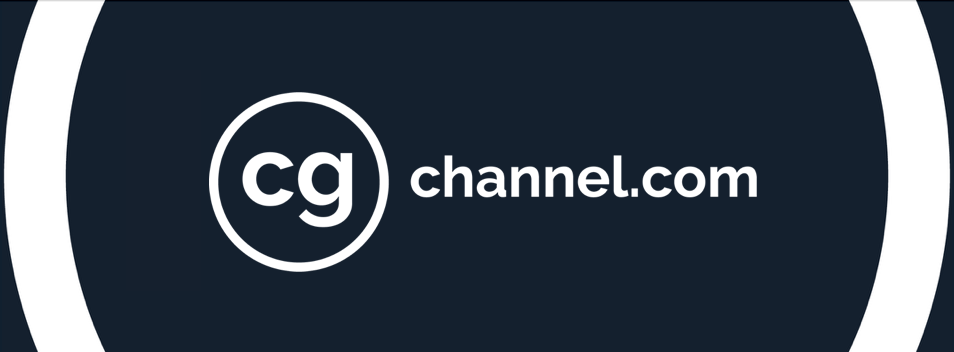Check out the key changes in the Nuke 17.0 open beta

Foundry has released Nuke 17.0, the latest update to its family of compositing apps, in beta.
In both Nuke and NukeX, the advanced edition of the software, the main change is a wide-ranging overhaul of the USD-based 3D compositing system, focused on projection workflows.
Nuke Studio, which includes editorial capabilities, also gets an overhaul of the timeline annotations system, intended to make annotations more graphically sophisticated.
Foundry asks us not to embed demo videos from beta builds, as details can change before the final release, but you can see the new features in action via the link at the foot of this story.
Nuke, NukeX and Nuke Studio: A ‘modernized’, more artist-friendly 3D system
The USD-based 3D compositing system introduced in Nuke 14.0 gets its “largest update yet” in Nuke 17.0, intended to support matte painting and projection-based workflows.
There are a lot of changes – both to the import and manipulation of USD data, and to camera, lighting and materials workflows – making it hard to single out individual new features.
However, a few common themes emerge from the release notes.
One is reducing delays before an artist can start work.
A new import dialog makes it possible to select exactly what data to import before having to pay the time cost of interpreting that data in the 3D viewer, with options to load or unload payloads, and activate or deactivate individual prims.
A second is streamlining existing workflows.
Many of the changes are intended to let artists to work with USD data in a way that makes sense for compositing rather than shot layout, particularly for setting up cameras and lighting.
A third is passing through more live data.
Rather than data having to be baked before import, the Axis, Camera and light nodes can all now accept live USD attribute data, expanding the work that can be done in Nuke itself.
Nuke, NukeX and Nuke Studio: New 3D nodes for importing USD and MaterialX data
In addition, a new GeoEditCamera node makes it possible to load a camera from a USD stage and edit its values directly inside Nuke, rather than having to duplicate it in a Camera node.
There are also four new GeoLight nodes for editing imported USD light prims inside Nuke.
The new nodes – GeoDistantLight, GeoDiskLight, GeoDomeLight, and GeoSphereLight – provide equivalents to Nuke’s standard DirectLight, SpotLight, PointLight and EnvironmentLight.
In addition, Nuke 17.0 adds initial support for MaterialX, with the new MtlXStandardSurface node making it possible to assign MaterialX Standard Surface materials to geometry.
The materials can be previewed using the Hydra viewer and rendered using the ScanlineRender2 renderer.
The change is intended to ensure that Standard Surface materials used in lighting and look dev can be represented accurately during compositing, reducing the need to round-trip shots.
Nuke Studio: overhauled ‘artistic annotations’ system
Nuke Studio users also get an overhaul of the Annotations system in the timeline tools.
The changes are intended to let users create more artistically sophisticated annotations, rather than having to rely on quick scribbles and text-based notes.
For drawn annotations, brushes now have size, opacity and hardness controls; and the Paint tool gets an eyedropper for picking colors, and support for blending modes.
There are also dedicated Dodge and Burn brushes, and an Eraser brush.
In addition, a new Annotations panel makes it possible to choose whether annotations apply to specific frames or in/out ranges, or are general comments.
Nuke, NukeX and Nuke Studio: Other workflow, performance and pipeline improvements
Other changes include workflow and performance improvements to Graph Scope Variables (GSVs), the ‘backbone’ of the multishot compositing workflow introduced in Nuke 16.0.
Deep data now renders to disk “up to 1.88x faster”, and image upscaling with the TVIScale node is “up to 98x faster on the GPU and 26x faster on the CPU”.
The resolution limit on OFX plugins has been removed, with maximum resolution now dictated by the capabilities of the user’s workstation, not the software itself.
Nuke 17.0 also introduces native support for ACES 2.0, with the ACEScg and OCIO Studio configs shipping with the software; and supports the current CY2025 spec for VFX Reference Platform.
In addition, the NotchLC codec is now supported on Windows for ingest and export of MOV files; and the MOV reader and writer now supports YCbCr conversion for working with HDR data.
Price and system requirements
Nuke 17.0 is compatible with Windows 10+, Rocky Linux 9.0 and macOS 14.0+. The software is rental-only.
Annual subscriptions currently cost $3,649/year for Nuke, $4,969/year for NukeX, and $6,069/year for Nuke Studio. Nuke Render licenses cost $440/year.
Subscriptions to Nuke Indie, the feature- and resolution-limited commercial edition for artists earning under $100,000/year, cost $499/year.
Read an overview of the features in Nuke 17.0 on Foundry’s website
Read more about the new features in Nuke 17.0 on the beta release page
(Requires a Foundry account)
Have your say on this story by following CG Channel on Facebook, Instagram and X (formerly Twitter). As well as being able to comment on stories, followers of our social media accounts can see videos we don’t post on the site itself, including making-ofs for the latest VFX movies, animations, games cinematics and motion graphics projects.
